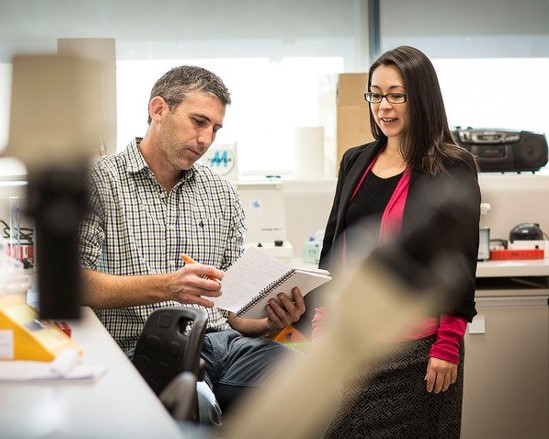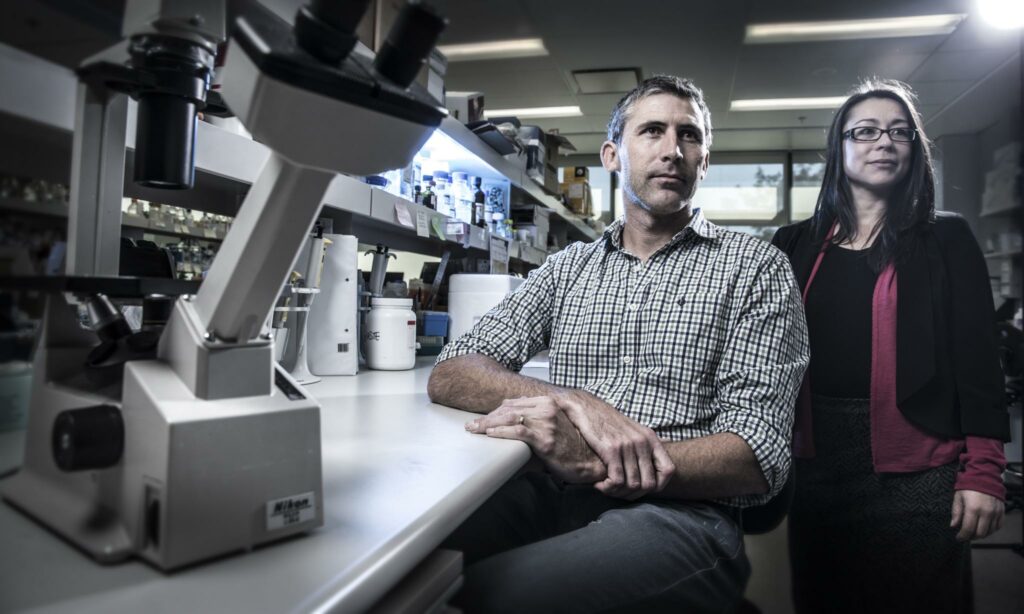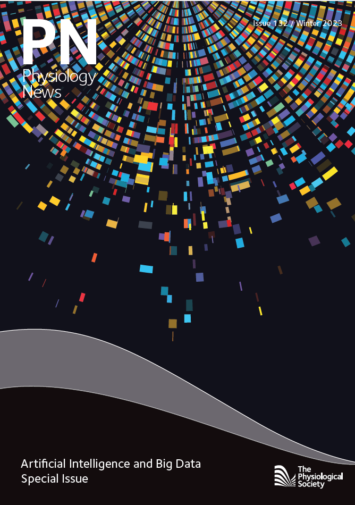
Physiology News Magazine
A tribute to Professor Justin Yerbury: an advocate and beacon of hope for motor neurone disease
Membership
A tribute to Professor Justin Yerbury: an advocate and beacon of hope for motor neurone disease
Membership
https://doi.org/10.36866/pn.132.45
Professor Lezanne Ooi, University of Wollongong, Australia
Professor Justin Yerbury AM died on 28 July 2023, aged 49. Justin was a molecular biologist researching motor neurone disease (MND), whilst also living with the disease. He was a multi award-winning scientist, known for his work on protein homeostasis (proteostasis) and was an advocate for people with disabilities (Yerbury and Yerbury, 2021).

Many scientists are driven by the pursuit of knowledge and dreams of contributing to society or finding a treatment to a disease. Sometimes the journey is personal, forged through a connection that shapes a career choice, an undercurrent that establishes a specific direction. So it was for Justin, whose close family members succumbed to a familial form of motor neurone disease (MND).
Justin had a brief career as a professional basketballer and studied a degree in commerce but chose to pursue a scientific career after losing several close family members to MND. He completed a Bachelor of Science Honours degree, followed by a PhD at the University of Wollongong, Australia.
I had the privilege of meeting Justin when I first started my lab at the University of Wollongong in 2012 and we began working together on projects shortly afterwards. Justin had a unique ability to bring other researchers along with him and he quickly established himself as a fantastic collaborator with many labs across Australia and internationally. This is how he built a cohesive research team and network of collaborators, all intent on the same goal of fighting MND. One of his most potent qualities was in giving life to new ideas and he was always supportive, no matter how naïve, or possibly absurd, the ideas may have sounded. Concepts were bounced around with energy and enthusiasm, and most of all I will remember Justin for his sense of humour and generally being fun to be around.

Justin’s research focused on understanding molecular mechanisms of MND and later focused more heavily on drug development for MND, work that continues to this day through the dedication of his research team. Justin was an expert in protein homeostasis (proteostasis) (Yerbury, 2016), the balance of protein expression and function that is necessary for all cell systems. The entire proteome exists in a delicate equilibrium that requires the coordination of a symphony of pathways to maintain functionality. Many neurodegenerative diseases, including MND, Alzheimer’s disease, Parkinson’s disease, and Huntington’s disease, exhibit a proteostasis imbalance, resulting in protein aggregation and neuronal death – characteristic hallmarks of these diseases. The proteome appears to be particularly vulnerable to stress in motor neurons and Justin’s work focused on unravelling the mechanisms underlying these vulnerabilities. These research areas included the roles of protein misfolding, aggregation and ubiquitin homeostasis disruption in amyotrophic lateral sclerosis (ALS), with his later work testing new drugs and treatment approaches, including gene therapy.
Justin had shared the battles of his family with our colleagues privately, but also with the public by participating in news articles and TV documentaries (ABC News, 2018). It was his own passion and commitment and seemingly endless ideas for new research directions that inspired many of us to work on MND. Justin’s family members carried an MND mutation in the SOD1 gene, which encodes superoxide dismutase 1. The SOD1 protein is expressed in mitochondria, and detoxifies the free radical superoxide, protecting against oxidative stress.

In 2016, Justin told us the devastating news of his MND diagnosis. His physical decline was rapid and painful to watch. As time went on, he lost the use of his arms then his legs. Nevertheless, he continued to work and came into the lab aided by his wheelchair to maintain the momentum of the research of his lab and collaborators. Within a year, Justin was given only months to live and made the difficult decision to have surgery to prolong his life. Through a tracheostomy, a machine controlled his breathing and as he was no longer able to speak, he used eye-gaze technology to communicate with his family, friends and colleagues. “I’m towing a jumbo jet” is how Justin described the enormous wheelchair and breathing apparatus and since he needed round-the-clock care, his care team joined every meeting. Yet still, the research continued. Such is the drive of a man on a mission. MND is a disease that takes away the physical aspects of a person piece by piece, but it is heartening to know that Justin lived his life to the fullest. He persevered through significant challenges, in order to continue contributing to fundamental knowledge of MND and therapeutic studies, as well as supporting the development of junior researchers and colleagues.
When we lose the best and brightest, we can be left with an enduring need to be more like them, to emulate their best qualities and continue their battles. Yes, Justin’s story is one of sadness, but it is also one of hope, motivation and courage. It is a reminder that as scientists our legacy is not only our direct research outcomes but also the network of people we inspire to continue our mission.

References
Yerbury JJ, Yerbury RM (2021). Disabled in academia: to be or not to be, that is the question. Trends in Neuroscience. Science & Society 44, 7, P507-509. https://doi.org/10.1016/j.tins.2021.04.004.
Yerbury JJ et al. (2016). Walking the tightrope: proteostasis and neurodegenerative disease. Journal of Neurochemistry 137(4), 489-505. https://doi.org/10.1111/jnc.13575.
ABC News (2018). The Enemy Within. www.abc.net.au/news/2018-03-21/the-enemy-within/9572042.
